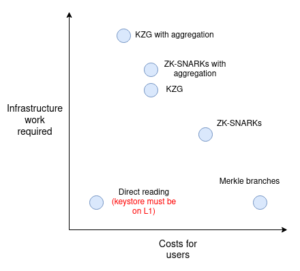
Vitalik Buterin, the co-founder of Ethereum, has published an informative paper delving into the technical problems of improving interoperability among Ether Layer 1 (L1) and Layer 2 (L2) technologies.
In light of the growing adoption of Ethereum’s L2s, there is an urgent need for more accessible cross-layer interactions. Addressing the pressing concerns, Buterin’s comprehensive analysis highlights two significant issues. Firstly, users are now holding assets across multiple L2s and L1s.
They need a seamless method to change their access keys across multiple accounts without resorting to numerous transactions. Secondly, Buterin identifies the importance of securely managing counterfactual addresses that are not yet registered on-chain but need to hold funds.

Buterin puts forth a unique asset/keystore separation architecture to tackle these challenges. According to this proposed model, users would maintain a keystore contract that houses their verification key and modification rules.
Moreover, wallet contracts on L1 and various L2s would engage in cross-chain communication to retrieve the verification key. Buterin outlines two implementations of this system. The “light version” requires the verification key to be stored locally in each wallet.
The current state of the Keystore is reflected through regular updates made using cross-chain proof. On the one hand, the “heavy version” requires cross-chain evidence for every transaction, reducing keystore updates costs. However, it also increases per-transaction expenses.
Exploring Proof Schemes & Optimizing Cross-Chain Explanations
Buterin’s discourse could employ five types of proof schemes identified by him. These range from Merkle proofs to Verkle proofs, each with strengths and weaknesses. Notably, he emphasizes the criticality of optimized cross-chain explanations.
Looking toward the long term, Buterin suggests that aggregating proofs through bundling operations submitted by users could help mitigate costs. Additionally, L2 solutions should aim to minimize the latency of reading the Layer 1 state.
Wallets can also be placed on systems with lower Ethereum connections, such as Layer 3s or separate chains. However, the Keystore should be retained on Layer 1 or high-security zero-knowledge rollup Layer 2s.
In conclusion, Buterin asserts that Ethereum is actively moving towards improved cross-chain interactions and asset/keystore separation. Furthermore, there is more emphasis on privacy.
Related Reading | Binance Integrates Bitcoin Lightning Network For Instant Deposits & Withdrawals
With the implementation of these groundbreaking proposals, Ethereum’s future holds the promise of greater efficiency within blockchain technology. Moreover, It seeks to give its users with better user experiences.








